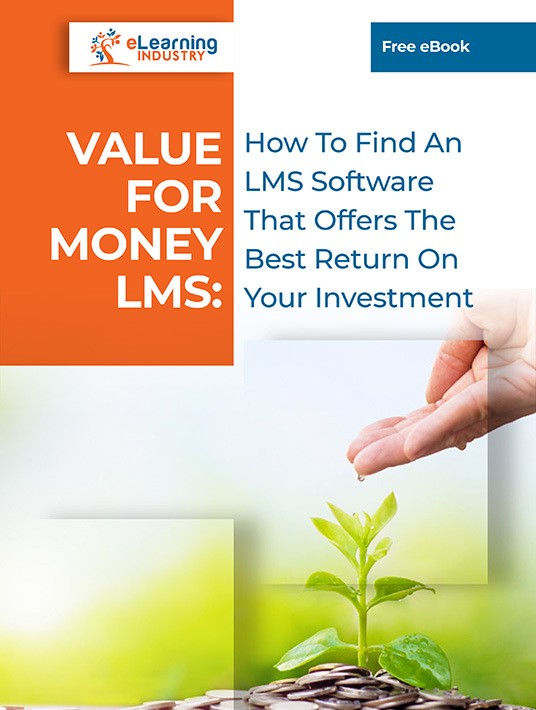How To Find A Value For Money LMS And Maximize ROI
Finding a value for money LMS that will give you maximum ROI requires you to narrow down your needs and evaluate your training objectives. Learning Management Systems have undergone numerous changes in recent years. Nowadays, most include a multitude of features such as gamification and certifications. But you may not necessarily need all the bells and whistles to fulfill your goals. In fact, some functions may be a waste of precious resources. So, the question is: how do you determine which platform will give you maximum ROI? And does the old adage of “you get what you pay for” ring true for the LMS selection process?

1. Conduct Audience Research To Determine Goals, Needs, And Expectations
Before deciding which LMS platform to purchase, do your homework. Since you will not be using the LMS alone, it is essential to collect data from your L&D team. This helps to avoid imposing a platform that falls short of their expectations or misaligns with their skills. Meet up with everyone who will be using the platform, including your external partners. Find out what your corporate learners want from the online training experience, and what your L&D team needs to make that happen. Conducting research also creates excitement and anticipation for the online training experience amongst employees. It makes them feel involved in the final buying decision. As a result, they embrace the platform and have a more positive attitude. This way, learning goals are attained quickly, and you get the best value for money LMS.
2. List All The Vital Features When Your Research For Value For Money LMS
Learning Management Systems come with a variety of features, which makes it difficult to choose the one that’s right for your organization. It might be difficult to narrow down to a few specific features that you need, but considering the characteristics of your audience is a great starting point. For example, if you are dealing with an audience that benefits most from collaborative learning, choose an LMS that has games and social learning support. Having features that suit the needs of your audience aids in better knowledge retention. Not to mention, streamlines the work process for your eLearning developers and admins.
3. Identify The Level Of Support Needed
Determine how much help your eLearning team can get by with (or without if they are more tech-savvy). While some teams require minimal support such as FAQ or email, some require extensive assistance. How much support does the LMS vendor offer? Does the LMS vendor offer round-the-clock support? Will they walk you through the whole set up process? These are some of the questions you need to answer before buying an LMS from a vendor. Ideally, the best LMS vendors are always available to offer help whenever technical problems arise. Ensure you ask various LMS vendors about the support services they offer for the LMS. Compare the services for each package and choose the best depending on your needs. This ensures that you maximize the functionality of your new LMS without overpaying for support services you don’t actually require.
4. Assess The Technical Limitations Of Your Value For Money LMS
How will the LMS be integrated into your current eLearning toolbox? Consider the technologies and software you have and the type of LMS they can support. Aside from your technical limitations, consider the limitations of the audience. Are they tech savvy? Identify how they like receiving information, such as on their mobile devices or PCs. If most of them like accessing knowledge from their smartphones, choose an LMS platform that is mobile friendly. Evaluating the tech experience of your team and how they access information will also aid in determining the online training activities you will include.
5. Analyze Your Current Online Training Strategy
Evaluating your current online training strategy will help you identify what is working and which areas need improvement. A value for money LMS will allow you to integrate the successful elements of your current online training strategy and eliminate the pain points. LMS metrics, surveys, and on-the-job evaluations can help you fine-tune your online training plan. During this online training assessment, identify the Instructional Design models to use, as well as skill and knowledge gaps you need to address. Also, if you’re making the switch from traditional training, identify which formats will support your current content best when you move it online.
6. Focus On Current And Future Needs
Focusing on the "now" needs is an expensive mistake that most people make when looking for an LMS. A certain platform may benefit you now, but what about in the future? Before you start looking for a new LMS, know your current and future needs. Find one that will evolve with your organization and scale with its expected growth. Ask yourself if the functionality and features will be useful to you a year (or five years) from now. A good LMS should be easy to maintain and use over time. When singling out your training needs, consider the integration capabilities of the LMS that will help you meet your learning objectives and goals.
7. Remember, Free Isn’t Always Better When Choosing A Value For Money LMS
There are a variety of free or freemium platforms on the market today. However, these tools typically have limited functionality or require in-depth programming knowledge. For example, open source platforms call for an IT team who can customize the tool to suit your needs. They also have more basic support services, if any.
With these 7 tips, you can choose a platform that will offer the best value for money now and for the foreseeable future. Getting maximum ROI requires you to consider the needs of your corporate learners, admins, developers, and the organization as a whole. A value for money LMS will help you satisfy everyone’s needs, close performance gaps, and achieve your business goals.
Download our eBook Value For Money Learning Management Systems for tips and tricks that can help you get the best value for money LMS. It also offers a step-by-step guide to calculate LMS ROI so that you can allocate your resources more effectively.






